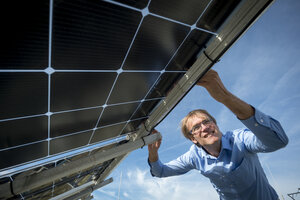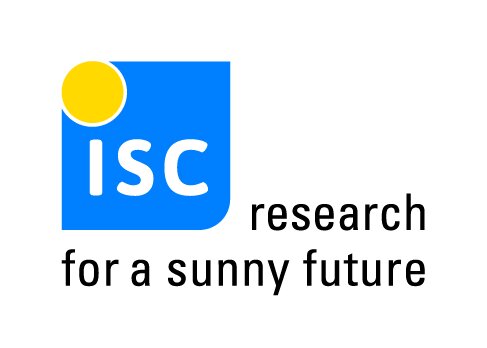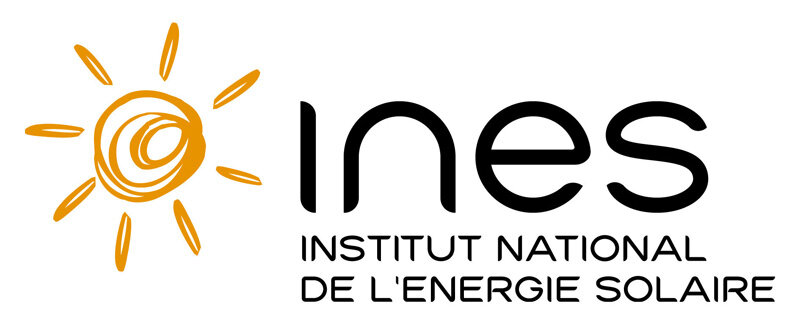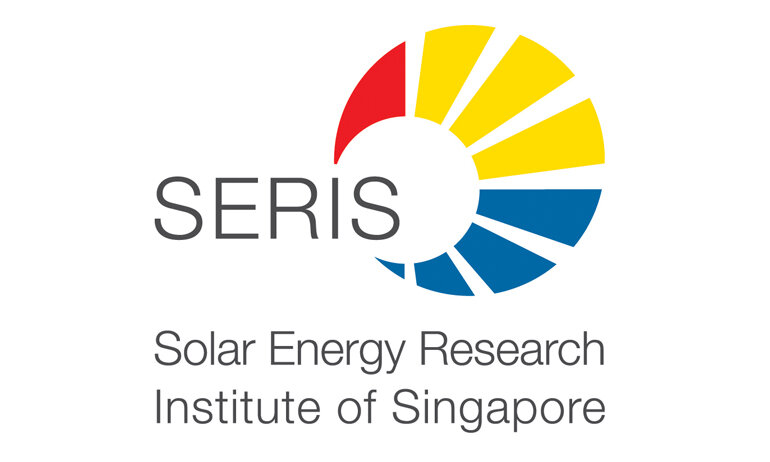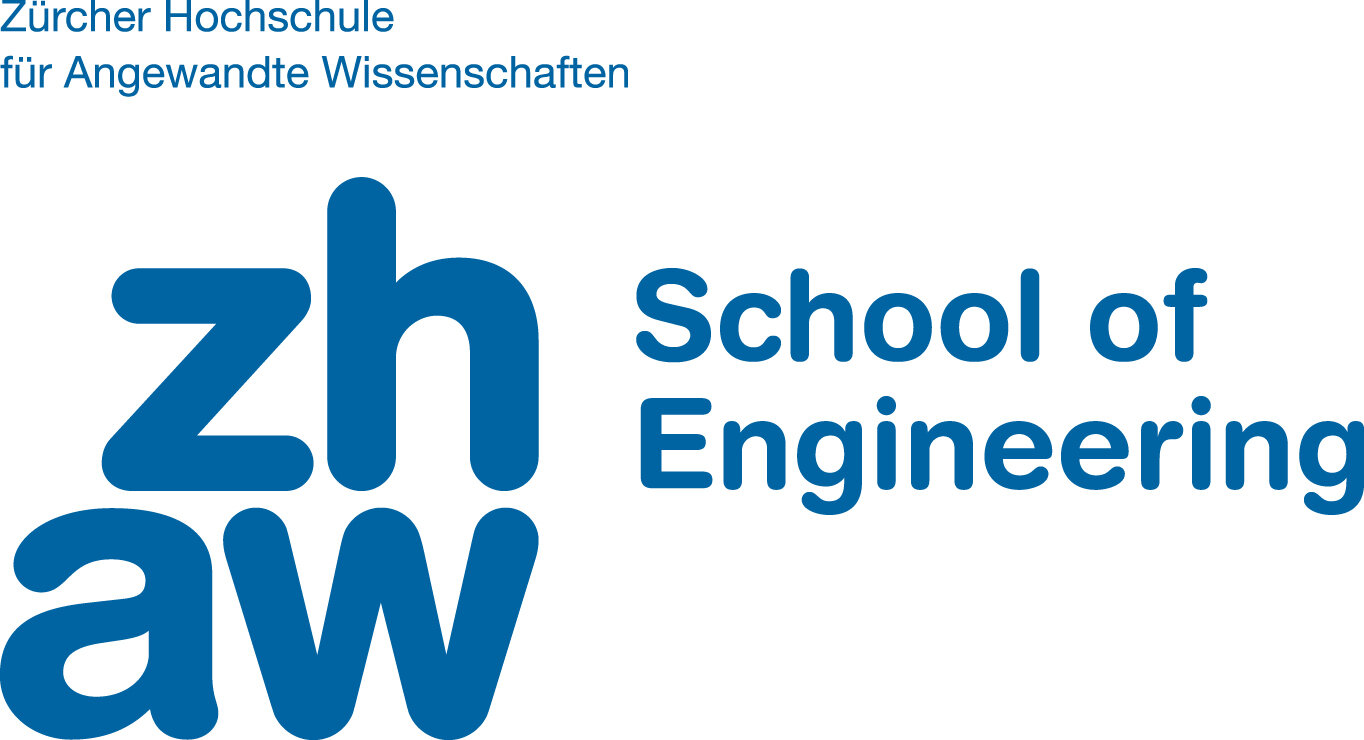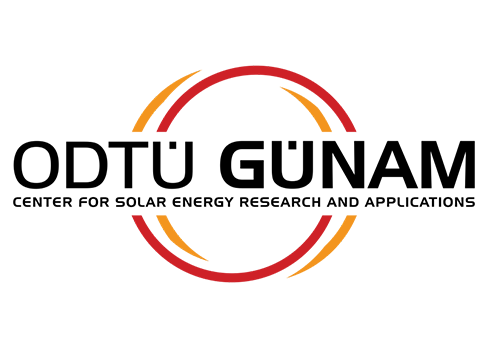Photovoltaics (PV) is increasingly becoming the most important energy source for a clean and widespread energy supply. In 2018 alone, 109GWp of PV capacity was installed globally. Every country has now realized that PV is not only ecological, but becoming extremely economical, with an average levelised cost of electricity (LCOE) of around 4ct/kWh. (In some cases, PV can reach a LCOE of around 2ct/kWh.) Bifaciality is one of the most promising technologies for driving these costs even lower. Bifacial PV systems can sometimes see gains of more than 30% and, combined with tracking, the total electrical gain can be close to 50%, which will reduce LCOE to below 2ct/kWh.
The Energy Research Centre of the Netherlands part of TNO (ECN>TNO), the International Solar Energy Research Center Konstanz (ISC Konstanz), the National Solar Energy, The National Renewable Energy Lab (NREL), Sandia National Laboratories (SNL), Institute (INES), and Zurich University of Applied Sciences (ZHAW), are proud to organise
The goal of this workshop is not only to review all existing technologies on the market, but also to set standards, to identify the market potential, and improve bankability of bifacial PV. We hope to see you at the workshop in Amstardam!
Your organisers –
Bas van Aken (ECN>TNO); Radovan Kopecek and Joris Libal (ISC Konstanz)
Marylin Joanny (INES); Hartmut Nussbaumer (ZHAW) Chris Deline (NREL) and Josh Stein (SNL);
Chairmain’s Message
Bas Van Aken, ECN.TNO
Dear Bifacial Friends, I’m honored to welcome you to the 2019 Bifacial PV Workshop in the Netherlands!
Large scale bifacial PV power plants are already operating since a few years in Asia. We learned in the 5th BifiPV Workshop in Denver that bifacial is about to break through in the USA too. But what about the less sunny regions of the world?
Two years ago, Tempress opened its 400 kWp solar power plant in the Netherlands, demonstrating that bifacial PV also makes sense in a temperate, maritime climate. Last year, Next2Sun opened a 2-MW bifacial, vertical power plant in Germany. And this month saw the grid connection of a 11.75 MWp bifacial solar power plant in the Netherlands by Unisun and Jolywood.
The 6th bifacial workshop, hosted by ECN.TNO in the Netherlands, will update you on the latest developments in the field of bifacial PV. We’re scheduling a programme ranging from solar cell technology to bankability, from performance modelling to module manufacturing and system installation to characterisation and reliability. There will be ample time for interaction with the speakers during the sessions. The informal character of the workshop allows for plenty discussions and meetings during the breaks.
Sunny wishes and best regards,
Bas Van Aken, ECN.TNO – Solar Energy
Venue and Activities
Location, Dinner & Tour
Location of bifiPV workshop 2019 – Amsterdam
Amsterdam, the capital of the Netherlands, is well-known for canals lined with narrow houses and gabled facades originating in the city’s 17th century Golden Age. Its Museum District houses the Rijksmuseum with, amongst others Rembrandt’s famous Nightwatch, the Van Gogh Museum and modern art at the Stedelijk museum.
Venue of bifiPV workshop 2019 – Level Eleven
We’re hosted by Level Eleven right in the middle of Amsterdam’s sparkling city centre and directly next to Amsterdam Central Station. Level Eleven (Stationsplein 51 – 53, Amsterdam) is highly accessible for everyone. A top-level location, in every sense of the word. Amsterdam is at your feet, you can see everything from this spot. Take a look at the city from high up and think about all the things you want to experience.
Dinner of bifiPV workshop 2019 – Monday 16 September
On Monday night, the bifacial talk will continue with the workshop dinner including a 360° view over the city centre and the banks of the IJ. Watch the trains and ferries, the bikes and pedestrians below. The dinner is included in the Workshop entrance. Some additional tickets for the dinner are also available at the registration website.
Accomodation for bifiPV workshop 2019
There is a large choice of places to stay in Amsterdam, which can be found via the usual websites or apps (Booking.com was founded in the Netherlands). A good place to start planning your visit to Amsterdam is the website of the Amsterdam Tourist Office.
Tour of bifiPV workshop 2019 – Wednesday 18 September
After the workshop, there is an optional tour to ECN.TNO in Petten, including lunch on the beach and a visit to the touristic hot spot Zaanse Schans. Tour can be booked at the registration website.
On our route, we will enjoy the various landscape adaptations that the Dutch created out of necessity to defend their land from the sea and in one go invented perpendicular street patterns and claimed the tulip as national flower.
We will visit the ECN.TNO solar energy facilities, including cell and module technology laboratory facilities and outdoor characterisation (weather permitting).
Next, a short walk, 30 mins, will bring us to a beach restaurant for an informal lunch (bus transport is of course also possible).
Final destination is de Zaanse Schans: “beautiful, unique and full of windmills”, a unique piece of Dutch history on the river Zaan.
Program
Click on the title to view the presentations
Day 1: Monday September 16, 2019
8:00 - 8:30 | Registration of participants
8:30 - 8:40 | Welcome message by conference chair | Bas Van Aken (ECN.TNO, the Netherlands)
8:40 - 8:50 | Opening of workshop | Ton de Jong (ECN.TNO, the Netherlands)
8:50 - 9:10 | Bifacial PV in the Netherlands | Arthur Weeber (ECN.TNO, the Netherlands)
Session 1: Solar cell technology, Chairs: Radovan Kopecek (ISC) & Arthur Weeber (ECN.TNO)
9:10 - 9:25 | Bifacial technology at Hanwha Q CELLS | Dominik Buß (Hanwha Q cells, Germany)
9:25 - 9:40 | Bifacial IBC | Valentin Mihailetchi (ISC, Germany)
9:40 - 9:55 | Bifacial perovskite tandem | Gianluca Coletti (ECN.TNO, the Netherlands)
9:55 - 10:20 | Networking Break
10:30 - 10:45 | Bifacial TOPCon cell technology | Bas van der Loo (Tempress, the Netherlands)
10:45 - 11:00 | Bifacial solar cells with extra transparent passivating contacts | Paula Bronsveld (ECN.TNO, the Netherlands)
11:00 - 11:15 | Panel Discussion
Session 2: Industrial module manufacturing, Chairs: Markus Klenk (ZHAW) & tbc (CEA-INES)
11:30 - 11:45 | The industrial application of n-type bifacial technology | Weiliang Wu (Jolywood, China)
11:45 - 12:00 | Glass-glass modules, 2 GWp HSAT | Julius Denafas (Solitek, Lithuania)
12:00 - 12:15 | Realize full potential of bifacial PERC technology | Hongbin Fang (LONGi Solar, USA)
12:15 - 1:15 | Lunch break
13:30 - 13:45 | Geometrical spectral albedo | Ziar Hesan (TU Delft, the Netherlands)
13:45 - 14:15 | Bifacial energy yield and technological aspects | Andre Richter (Meyer Burger, Switzerland)
14:15 - 14:30 | Panel Discussion
14:30 - 15:15 | Networking Break
Session 3: Systems, racking and installations, chairs: Bas Van Aken (ECN.TNO) & Hervé Colin (CEA-INES)
15:15 - 15:30 | Bifacial tracking: real bifacial gain | Javier Guerrero (Soltec, USA)
15:30 - 15:45 | Solar Highways: effect of albedo on solar noise barrier performance | Simona Villa (SEAC, the Netherlands)
15:45 - 16:00 | Agro PV - Next2sun´s vertical installations | Christian Meyer (Next2sun, Germany)
16:00 - 16:15 | Single-axis tracking bifacial PV systems; empirical and modeling results | Greg Beardsworth (NEXtracker, USA)
16:15 - 16: 30 | Vertically mounted bifacial modules for green roof applications | Andreas Dreisiebner (SolarSpar, Switzerland)
16:30 - 16:45 | Benefits of bifacial PV panel for agrivoltaics | Jean Garcin (Sun'R, France)
16:45 - 17:00 | Soltiqua: bifacial HSAT - 1h, 1v, 2h or 2v? | Francesco Orioli (Soltigua, Italy)
17:00 - 17:15 | Panel Discussion
17:15 | End of Day 1
17:15 - 17:30 | Summary - open discussion time
17:30 - 18:00 | Pre-dinner functional at Level-11
18:00 | Dinner at Level-11
Day 2: Tuesday September 17, 2019
8:00 - 8:30 | Registration of participants
Session 4: Bankability and LCoE, Chair: Chris Deline
8:30 - 8:45 | Outdoor testing for model validation | Jenya Meydbray (PV evolution labs, USA)
8:45 - 9:00 | Application of IEC 61853 to bifacial PV | Roland Valckenborg (ECN.TNO, the Netherlands)
9:00 - 9:15 | LCOE-driven method for selection and layout optimization of albedo enhancer materials | Jean-Nicolas Jaubert (Canadian Solar, China)
9:15 - 9:30 | Considerations for utilizing bifacial PV technologies based upon their impact to project financial metrics | Michael Woodhouse (NREL, USA)
9:30 - 9:45 | Bankability improvement for bifacial technology / The other side of the coin | Stephane Lebeau (DNV GL, France)
9:45 - 10:00 | Panel Discussion
10:15 - 12:00 | Networking Break & Poster Session
12:00 - 1:15 | Lunch Break
Session 5: Bifacial performance modellin, Chair: Silvana Ayala & Yan Wang
13:15 - 13:30 | IEA PVPS Task 13 (PV performance and reliability) - bifacial PV performance modeling comparison | Joshua Stein (Sandia, USA)
13:30 - 13:45 | Biforot (ZHAW) validation by ISC, ECN.TNO, PVSyst | Markus Klenk (ZHAW, Switzerland)
13:45 - 14:00 | Bifacial performance modelling | Thomas Capelle (CEA-INES, France)
14:00 - 14:15 | Albedo from satelite/ground based observations | Bill Marion (NREL, USA)
14:15 - 14:30 | Effective spectral albedo and uncertainties from ground based and satellite ground reflectance data for bifacial PV systems modelling | James Blakesley (National Physical Laboratory, UK)
14:30 - 14:45 | Rear irradiance inhomogeneity of bifacial PV modules: Modeling and quantification by MoBiDiG | Djaber Berrian (ISC, Germany)
14:45 - 15:00 | BIGEYE - simulations under shadow conditions | Teun Burgers (ECN.TNO, the Netherlands)
15:00 - 15:15 | Panel Discussion
15:15 - 15:45 | Networking Break
Session 6: Characterisation and reliability, Chairs: Joshua Stein (Sandia) & Bas Van Aken (ECN.TNO)
15:45 - 16:00 | Transparent Tedlar® PVF backsheets for durable bifacial PV modules | William Gambogi (DuPont, USA)
16:00 - 16:15 | The risk and reward of bifacial PV adoptation | Itai Suez (Silfab, Canada)
16:15 - 16:30 | Potential-induced degradation (PID) at the rear side of bifacial PERC solar cells | Volker Naumann (Fraunhofer CSP, Germany)
16:30 - 16:45 | Temperature coefficients and LeTID of Bifacial PV modules | Stefan Roest (EternalSun, the Netherlands)
16:50 - 17: 05 | Bifacial utility scale projects – recommendations for commercial acceptance test practices from the engineering procurement and construction (EPC) perspective | Beth Copanas (RES Americas, USA)
17:05 - 17: 20 | Panel Discussion
17:20 - 17:35 | Workshop Summary and Handover to End of Workshop
Day 3: Wednesday September 18, 2019
8:00 - 9:30 | Technical Tour | meet at the back of Amsterdam Central Station - touring car bus stop Powerzone, Ruijterkade 153 Amsterdam
9:30 - 12:00 | Visit ECN.TNO R&D labs
12:00 - 12:30 | Travel from ECN to beach club (on foot or by bus)
12:30 - 13:30 | Lunch on the beach, Beach club Zee & Zo
13:30 - 14:30 | Travel from beach to Zaanse Schans
14:30 - 15:30 | Zaanse Schans
16:00 - 16:45 | Transport
16:45 | Return in Amsterdam
POSTER SESSION: Tuesday September 17 2019
- Vertical bifacial PV – a complementary technology for European electricity markets? | Dimitrij Chudinzow (Uni Stuttgart, Germany)
- Hemispheric IAM test | Martino Falsini (Italy)
- Proof of concept for an integrated module-tracker design with improved energy yield | Yuanjie Yu (Canadian Solar, China)
- Measurement of bifacial solar cells with single- and both-sided illumination at CalLab PV Cells | Fan Guo (Fraunhofer ISE, Germany) 1. Bifacial tracking testbed at NREL | Chris Deline (NREL, USA)
- Miniaturized test array as a means to determine the energy harvest of bifacial installations | Markus Klenk (ZHAW, Switzerland)
- The outdoor bifacial test facility at the Technical University of Denmark | Nicholas Riedel (DTU, Denmark)
- Bifacial PV system mismatch loss estimation | Silvana Ayala (NREL, USA)
- Field albedo measurements | Bill Stueve (Atonometrics, USA)
- Outdoor Bifacial gain test results in the Atacama Desert: Four technologies in direct comparison, installed in HSAT and fixed tilt | Thore Muller (ENGIE, Chili)
- Bifacial silicon PV modules characterisation at the European Commission | Juan Garcia-Lopez (JRC-ISPRA, Italy)
- Non destructive imaging of moisture ingress in double glass encapsulant laminates | Sergiu Pop (SCP SYS, USA)
- Modelling Non-Uniform Irradiance and Annual Energy Yield for Single-Axis Tracked Bifacial PV Systems with Racking | Annie Russell (Uni Ottawa, Canada)
- ATAMOSTEC Project: Atacama Desert PV Platform | Ernrique Cabrera (ISC Konstanz, Germany)


